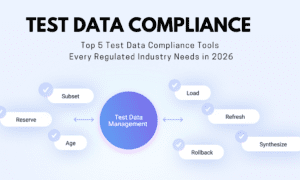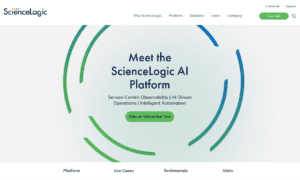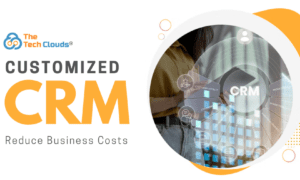AI in Financial Forecasting: Case Studies, Tools, and Trends Shaping Market Predictions and Investments
Artificial Intelligence (AI) has become a transformative force in financial forecasting. Companies and investors rely on accurate predictions to make informed decisions. Traditional forecasting methods have limitations. AI addresses these issues by analysing vast data sets, identifying patterns, and delivering real-time insights. Several tools and case studies highlight the impact of AI on financial forecasting. This article explores these case studies and tools, showing how AI reshapes the financial landscape.
Key Role of AI in Financial Forecasting
AI improves financial forecasting in several ways:
- Data Processing at Scale: AI processes massive amounts of data. This includes structured and unstructured data. AI algorithms can analyse real-time data and predict outcomes faster than humans.
- Identifying Hidden Patterns: Traditional models struggle with complex data relationships. AI excels at recognising these intricate patterns. This helps in making more accurate forecasts.
- Reducing Human Bias: Forecasts often include human biases. AI models minimise these biases by relying solely on data. This results in more objective predictions.
- Adaptation to Market Changes: Markets are dynamic. AI models continuously learn from new data and adapt to changing market conditions.
Case Studies of AI in Financial Forecasting
Several organisations have leveraged AI to improve financial forecasting. Here are a few notable case studies:
1. JP Morgan Chase
JP Morgan Chase uses AI to enhance its trading strategies and financial predictions. The bank developed an AI-based tool called LOXM. This tool handles trades and optimises decision-making based on market conditions. JP Morgan Chase reports improved efficiency in trade execution, forecasting market trends, and managing risks. The accuracy of their predictions improved significantly after adopting AI. This success highlights how financial institutions can benefit from AI-driven financial forecasting.
2. Kensho Technologies
Kensho Technologies, acquired by S&P Global, built AI-driven financial forecasting systems. Their AI-based tool, Warren, predicts market movements by analysing global news, economic indicators, and company data. Kensho’s system processes data from multiple sources to create accurate market forecasts. The platform predicts the impact of events such as elections or policy changes on the stock market. This allows investors and businesses to prepare for future market movements. S&P Global’s integration of Kensho’s technology significantly enhanced its forecasting accuracy.
3. BlackRock
BlackRock, the world’s largest asset manager, utilises AI to improve portfolio management and financial forecasting. BlackRock’s AI platform, Aladdin, processes large data sets from financial markets. Aladdin analyses real-time market data to make accurate predictions about asset performance. It has become an essential tool for BlackRock’s investment strategies. By incorporating AI, BlackRock improved its financial forecasting capabilities, allowing for better investment decision-making and risk management.
4. Robo-Advisors
Robo-advisors like Betterment and Wealthfront use AI to forecast market trends and provide personalised investment advice. These platforms leverage machine learning algorithms to create tailored investment portfolios based on individual goals and market data. AI tools analyse market conditions and make adjustments to portfolios in real time. This allows users to make informed decisions without extensive financial knowledge. Robo-advisors continue to grow in popularity due to their cost-effective and accurate forecasting capabilities.
Tools for AI-Driven Financial Forecasting
Various AI tools and platforms have been developed to enhance financial forecasting. Here are some of the most widely used tools:
1. H2O.ai
H2O.ai offers an open-source AI platform designed for financial forecasting. It uses machine learning models to process financial data and predict trends. The platform integrates with various data sources, allowing businesses to analyse historical and real-time data. H2O.ai helps financial institutions forecast sales, manage risks, and optimise portfolios. Its machine learning models adapt to changing market conditions, making forecasts more accurate over time.
2. IBM Watson
IBM Watson is a powerful AI platform widely used in financial forecasting. It offers data analysis, machine learning, and natural language processing capabilities. Financial institutions use IBM Watson to analyse data from different sources and create detailed forecasts. Watson helps organisations predict customer behaviour, assess risks, and optimise financial strategies. Its ability to process structured and unstructured data provides deeper insights into market trends and future opportunities.
3. Ayasdi
Ayasdi uses AI and machine learning to predict market behaviour. The platform focuses on deep learning techniques to analyse financial data. Ayasdi’s AI-driven algorithms can predict market crashes, detect fraud, and forecast stock prices. By identifying hidden relationships in data, Ayasdi improves financial forecasting accuracy. The platform has become a key tool for financial institutions looking to enhance their risk management and forecasting capabilities.
4. DataRobot
DataRobot is an AI platform designed for automated machine learning. It allows businesses to build and deploy predictive models quickly. DataRobot’s AI tools are used in financial forecasting to predict stock prices, analyse customer data, and assess risks. The platform provides accurate financial predictions by analysing historical data and real-time market trends. Its ease of use makes it a popular choice for businesses looking to adopt AI-driven forecasting models.
Latest Trends and Figures in AI Financial Forecasting
The demand for AI-driven financial forecasting continues to rise. According to a report by MarketsandMarkets, the global AI in the financial services market is expected to grow from $9.5 billion in 2022 to $31.71 billion by 2027, at a compound annual growth rate (CAGR) of 27.6%. This growth reflects the increasing reliance on AI for accurate financial forecasting.
A 2023 study by Deloitte highlights that 76% of financial institutions are now investing in AI tools for forecasting purposes. This is a sharp increase from 58% in 2020. The shift shows how quickly AI is becoming a standard in financial forecasting.
Additionally, AI-driven tools have reduced forecasting errors by up to 30% compared to traditional methods. This significant improvement demonstrates the impact of AI on financial predictions and decision-making.
AI plays a crucial role in transforming financial forecasting. It enables businesses to process large volumes of data, identify hidden patterns, and adapt to market changes. Case studies from JP Morgan Chase, Kensho Technologies, BlackRock, and Robo-advisors show how AI has improved financial forecasting accuracy. Tools like H2O.ai, IBM Watson, Ayasdi, and DataRobot further enhance the forecasting process. With the growing adoption of AI, financial institutions are expected to rely even more on AI-driven models for accurate predictions and better decision-making.
The future of financial forecasting lies in AI. The latest figures support this trend, with the market for AI-driven financial services projected to grow rapidly in the coming years. As more financial institutions embrace AI, the accuracy of financial forecasts will continue to improve, providing a competitive edge to businesses and investors.



































